Pilgrimage Play Theatre (later, John Ford Theatre)
 |
|
| (1920s)* – View showing Christine Wetherill Stevenson posing for the camera in front of the Pilgrimage Play Theatre. Photo courtesy of KCET / Music Center Archives |
Historical Notes Berkeley architect, Bernard Maybeck designed this original wood-frame facility for Christine Wetherill Stevenson, a Philadelphia-born heiress to the Pittsburgh Paint Company fortune, for the staging of her work,"The Pilgrimage Play;" in 1920. Stevenson was an actress, playwright and arts philanthropist, and had the finances to build venues for her religiously-themed productions. Originally connected to the Theatre Arts Alliance building the Hollywood Bowl, Stevenson and her wealthy friend, Marie Rankin Clarke left that project c. 1920 in a dispute over the religious/spritiualist content that the two women favored. Stevenson bought 29 acres across the street from the Hollywood Bowl property, and established her Pilgrimage Theatre, where "The Pilgrimage Play" was staged each summer until 1929 when a brush fire destroyed the theatre.^ |
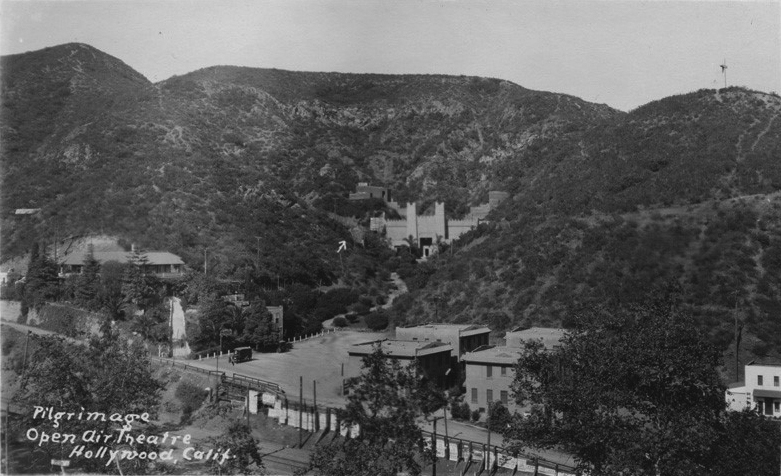 |
|
| (ca. 1923)^ - Postcard view showing the Pilgrimage Amphitheatre in the Cahuenga Pass section of the Hollywood Hills. A cross is seen on top of the hill at right. |
Historical Notes The gates of the Pilgrimage Theatre #1 had an exotic look, with crenellated ramparts recreating Jerusalem's City Walls. The upper parts of the ramparts were cantilevered, adding to their apparent visual weight. Two battered towers standing well above the rampart walls, marked either side of the main entry. The Hollywood Cross (also known as the Hollywood Pilgrimage Memorial Monument) is a 32-foot high, steel cross and historic-cultural monument (#617) in Hollywood. Located just above the Ford Amphitheatre (originally Pilgrimage Theatre) and overlooking the Cahuenga Pass, it was originally erected in 1923 as a memorial for Christine Wetherill Stevenson.^ |
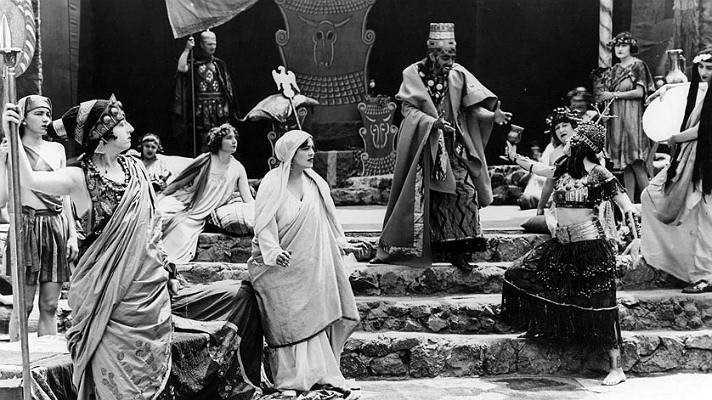 |
|
| (n.d.)* - Scene from the Pilgrimage Play, Salome before Herod. |
Historical Notes An heiress of the Pittsburgh Paint Company and a patron of the arts, Christine Wetherill Stevenson had a vision to open an open-air theatre and produce her own plays. Stevenson realized her dream in 1920, when she opened the Pilgrimage Theatre and staged The Pilgrimage Play, her adaptation of the life of Christ. Stevenson died suddenly in 1922 - the Hollywood Pilgrimage Memorial Monument (aka the Great Hollywood Cross) was erected in her memory a year later. Her play would continue to be performed every summer until 1929, when the original wooden structure was destroyed by a brush fire in October. A new theatre, built on the same site with poured concrete and designed to evoke the gates of Jerusalem, opened in 1931. The Pilgrimage Play was performed there until 1964, interrupted only by World War II. The land was deeded to L.A. County in 1941.* |
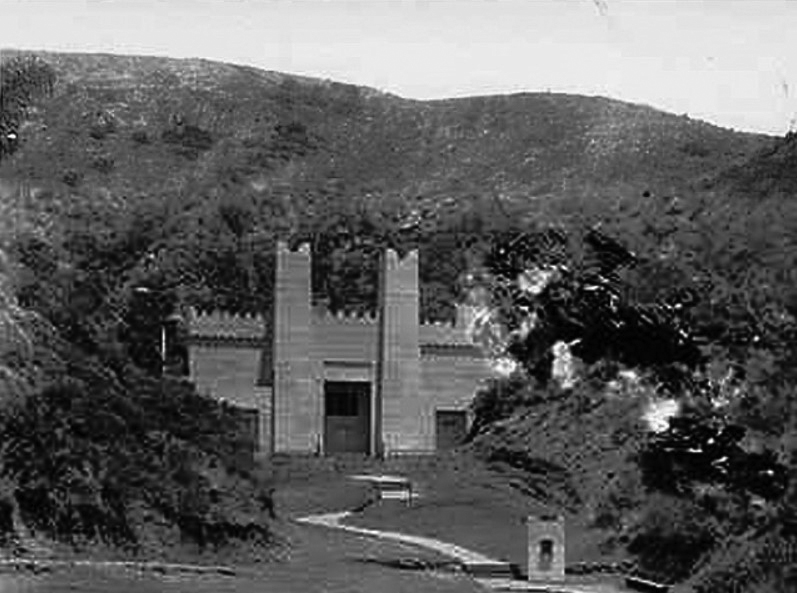 |
|
| (1921)^^+ – Close-up view of the Pilgrimage Theatre located at 2580 Cahuenga Bouelvard East. |
Historical Notes The gates of the Pilgrimage Theatre #1 had an exotic look, with crenellated ramparts recreating Jerusalem's City Walls. The upper parts of the ramparts were cantilevered, adding to their apparent visual weight. Two battered towers standing well above the rampart walls, marked either side of the main entry.^ |
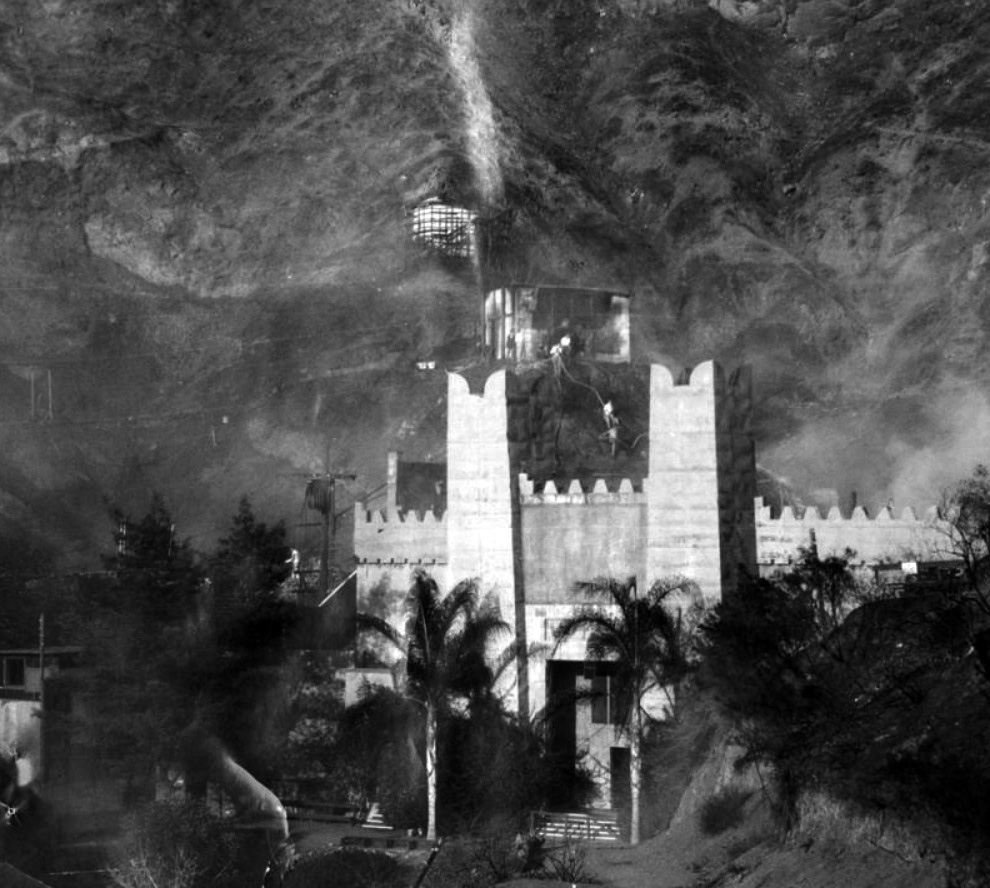 |
|
| (1929)* - Photograph caption dated October 30, 1929 reads, "All that remains of the Pilgrimage Theatre is the entrance and a few rows of seats.” Photo shows firemen hosing down the hillside surrounding the Pilgrimage Theatre after a brush fire ravaged the area. |
Historical Notes In October 1929, the original Pilgrimage Play Theatre was destroyed by a brush fire. However, within 2 years the Pilgrimage Theatre would be rebuilt in concrete at the same location. |
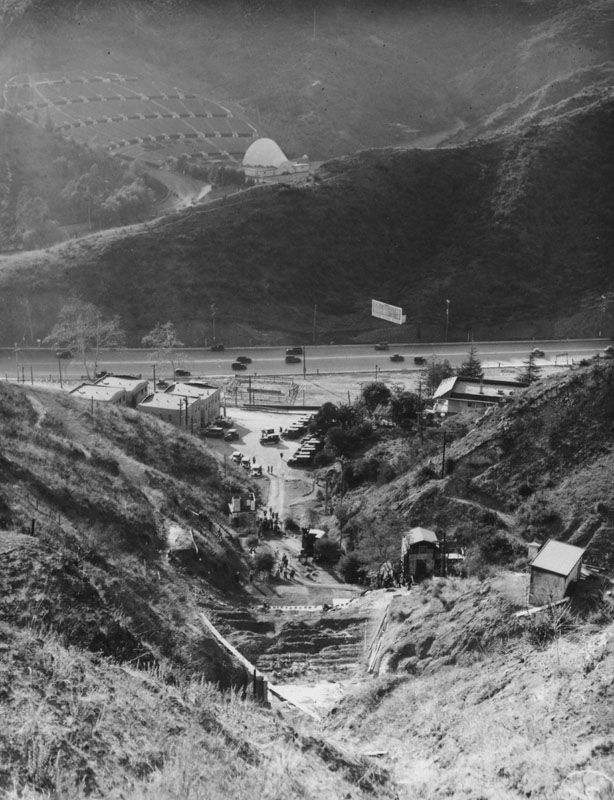 |
|
| (1931)* - Looking down into the site of the future Pilgrimage Play Amphitheater #2, revealing the Cahuenga Pass and the Hollywood Bowl in the background. The new structure will resemble the architecture of the Holy Land for the purposes of the play performed there. The previous amphitheater on the site was built in 1920, but a brush fire in October 1929 destroyed that wooden structure. |
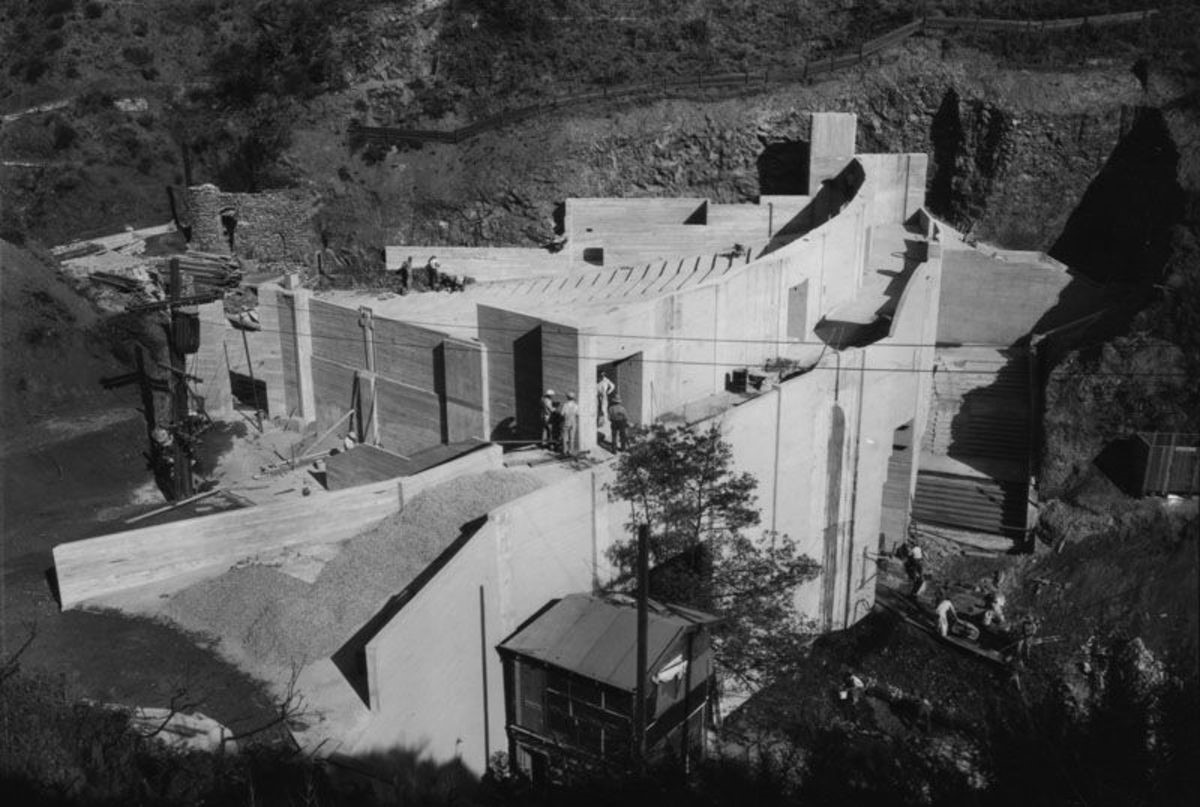 |
|
| (1931)* - Construction of the new Pilgrimage Play Amphitheatre |
Historical Notes Made of cast concrete, the new amphitheater was designed to resemble the ancient architecture of the Holy Land for the purposes of the play performed there. The previous amphitheater on the site was built in 1920, but a brush fire in October 1929 destroyed that wooden structure. |
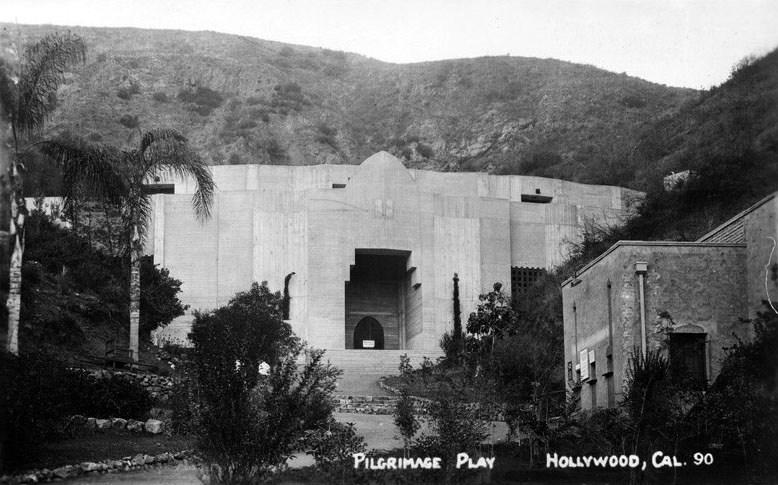 |
|
| (ca. 1931)^*# - Postcard view showing the front entrance to the newly built Pilgrimage Theatre (No.2) in Hollywood. |
Historical Notes A new Pilgrimage Theatre was built on the same site as the original and opened in 1931. The new theatre was constructed of poured concrete and designed in the style of ancient Judaic architecture to resemble the gates of Jerusalem. |
 |
|
| (ca. 1931)^ - Looking down into the Pilgrimage Play Amphitheater (renamed the John Anson Ford Theatre in the early 1970s) revealing some of the biblical-like structures on the hillside. |
Historical Notes The Pilgrimage Play Amphitheater resembled the architecture of the Holy Land for the purposes of the play performed there. The religious-themed Pilgrimage Play, written by Christine Whetherill Stevenson, was performed every summer between 1920 to 1941. |
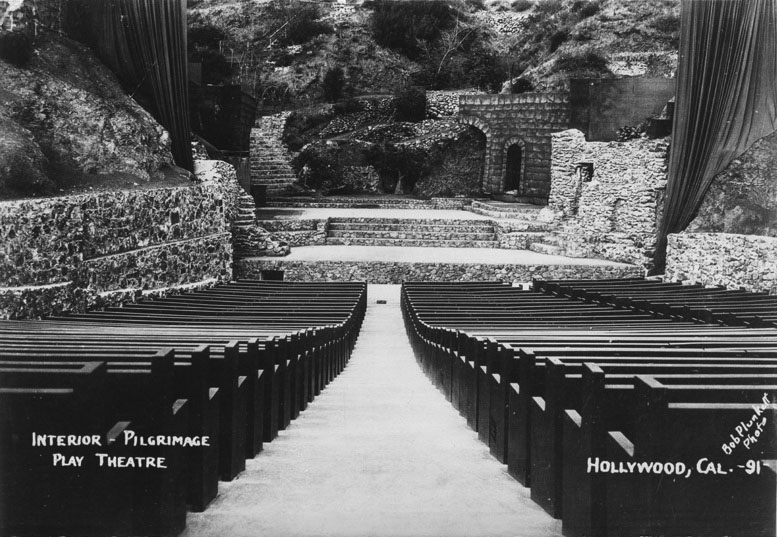 |
|
| (ca. 1931)* - Postcard view of the Pilgrimage Play Theatre seating and stage. |
Historical Notes During WWII the theater was deeded to Los Angeles County and converted into dormitories for servicemen. After the war, the play resumed until 1964, at which time it was legally ordered to close due to its religious content.* |
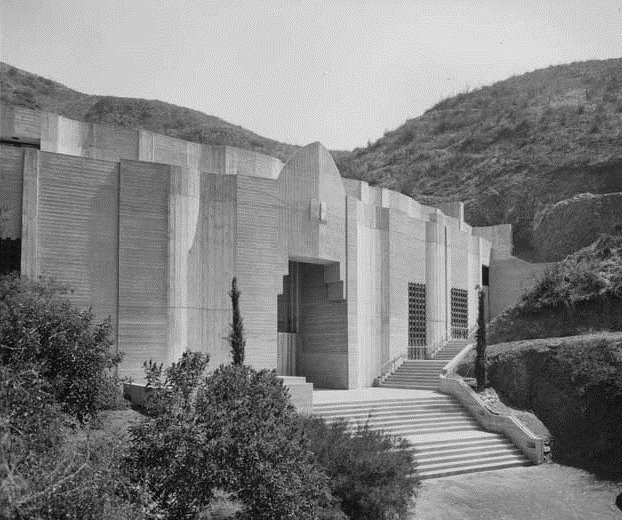 |
|
| (ca. 1931)^ - Close-up view of the front entrance to the Pilgrimage Play Theatre. |
 |
|
| (ca. 1937)* - View showing a Foster and Kleiser billboard for the Pilgrimage Play outside the Pilgrimage Theatre, later the John Anson Ford Amphitheatre (2580 Cahuenga Boulevard). |
Historical Notes In 1941, the land was deeded to the County of Los Angeles. The Pilgrimage Play continued to be presented until a lawsuit in 1964 forced its closure because of its religious nature. In 1964, "Pilgrimage Play" had its final run at its original home. By that time, according to an L.A. Times article, one million people had seen the show. In 1976, the Pilgrimage Theatre was renamed the John Anson Ford Theatre in honor of the late L.A. County Supervisor's significant support of the arts. John Anson Ford (1883–1983) helped found the L.A. County Arts Commission, encouraged the Board of Supervisors to support the building of the Music Center and led the County's acquisition of Descanso Gardens, among many other achievements.*^ |
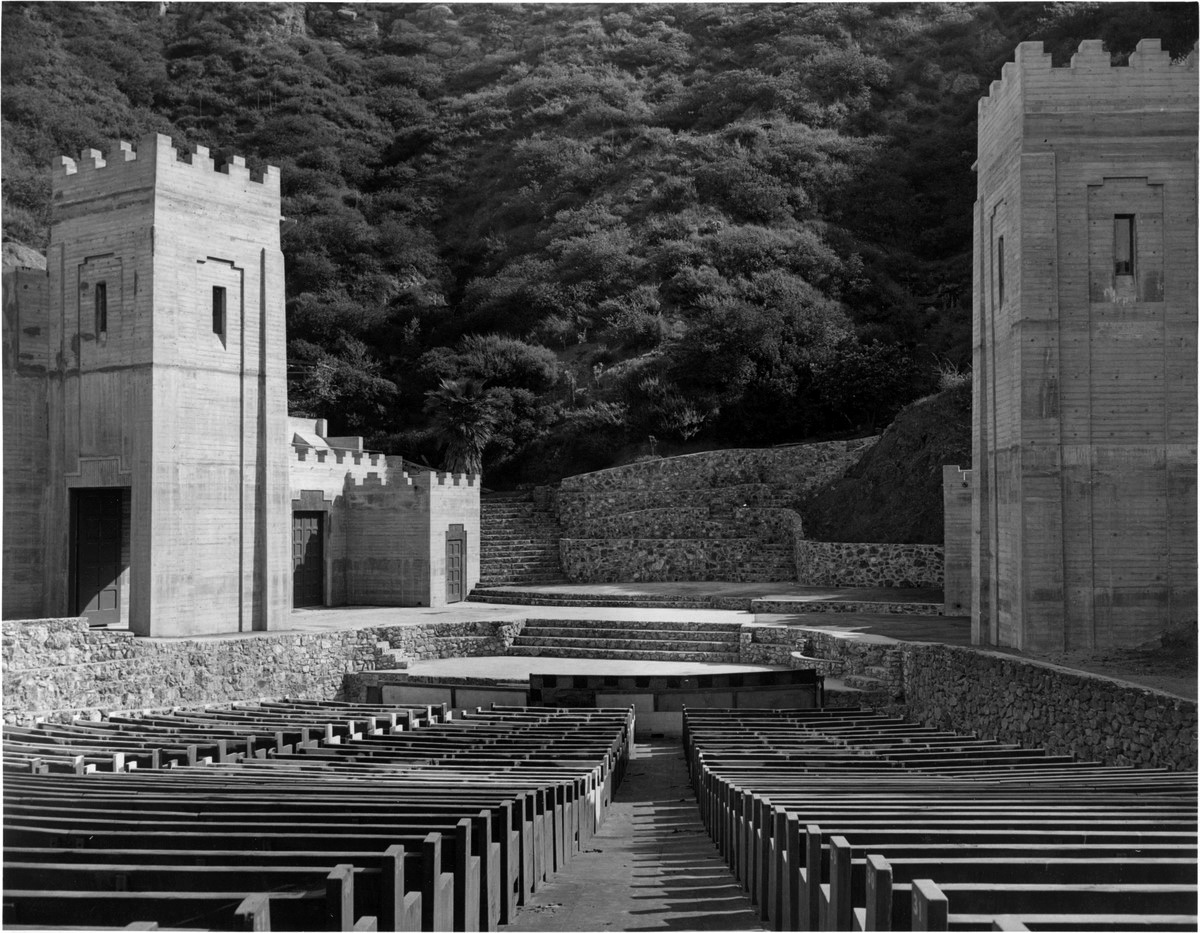 |
|
| (1947)^^ – Pilgrimage Theatre (later Ford Theatre) Stage. Photo courtesy of the Los Angeles County Music Center |
Historical Notes In the early 1940s, the Pilgrimage Play Theater was donated to Los Angeles County and the play for which this space was built went from being an annual phenomenon to a sporadic production. In the 1960s, the play fell under fire from authorities concerned that, because "Pilgrimage Play" received City and County funds, it was a violation of the separation of church and state. To save the play, a fundraising committee worked to get the money together for another season of the show. The person in charge of that endeavor was John Anson Ford, who was previously a County Supervisor (The venue itself was named after him in 1976).* |
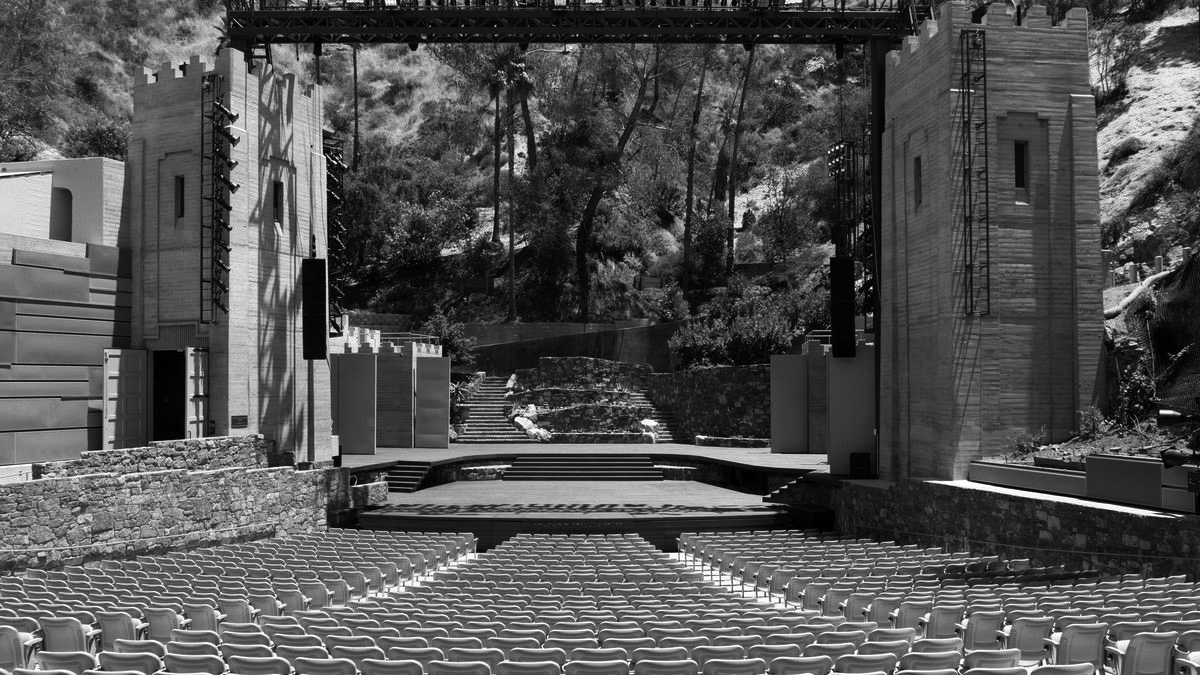 |
|
| (2017)** – Ford Theatre stage and seating as it appears today. Photo by Elizabeth Daniels / Curbed LA |
Historical Notes What separates the Ford from other outdoor ampitheaters is that it doesn’t have a manmade shell. |
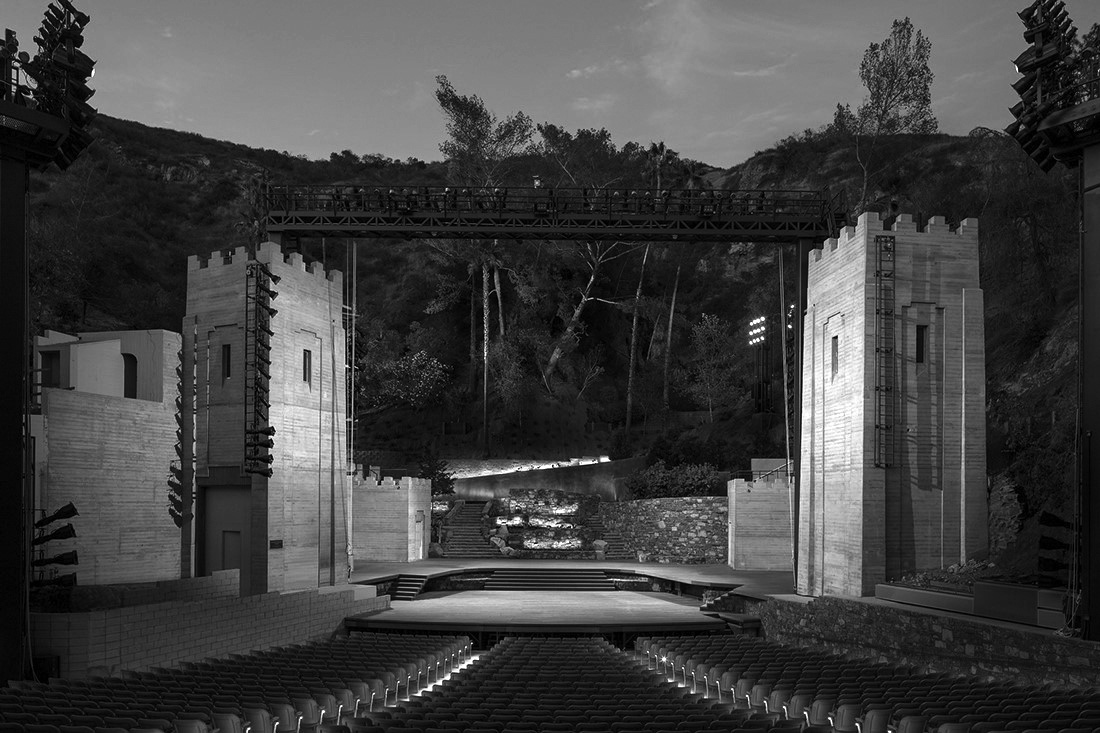 |
|
| (2017)^ - Amphitheatre stage at night. Photo by Tom Bonner / KCET |
Historical Notes A new lighting and sound transform was added to heighten the technological capabilities of the Amphitheatre and to improve audience and performer experiences. |
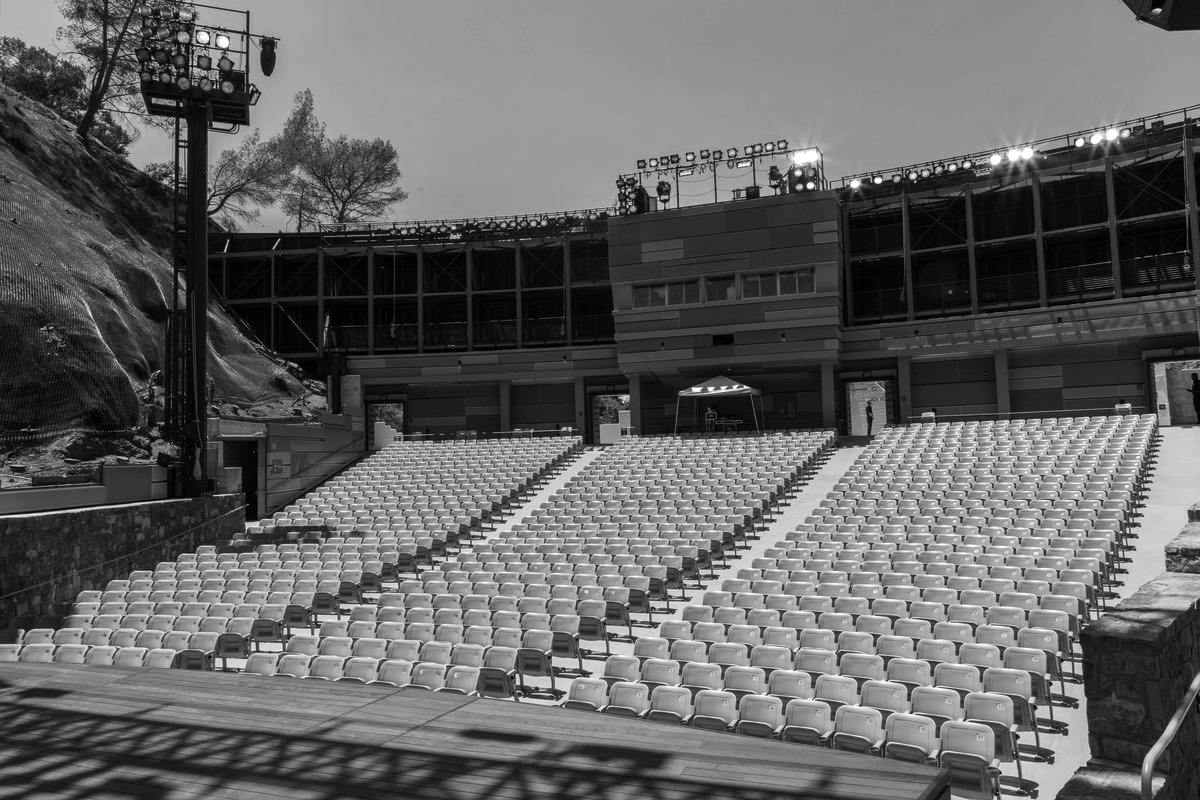 |
|
| (2017)^ - View as seen from stage looking toward seating at the Ford Theatre. Photo by Elizabeth Daniels / Curbed LA |
Historical Notes “The [Hollywood] Bowl is fabulous, but the Bowl seats 18,000 people. We seat 1,200 people. Instead of looking at big screens, you're looking at an artist's eyes, and you get a completely different visceral experience when you see an artist at the Ford Theatre than you do at the Bowl. There's no bad seat in the house,” Ford executive director Olga Garay-English |
 |
|
| (2017)* – View showing the new sound wall built atop original concrete façade. Photo by Elizabeth Daniels |
Historical Notes The intimate venue fresh off the heels of a $72.2-million makeover that brought in a new dining terrace, beautiful wood stage, and top-notch acoustics that block out the roar of the 101 freeway. |
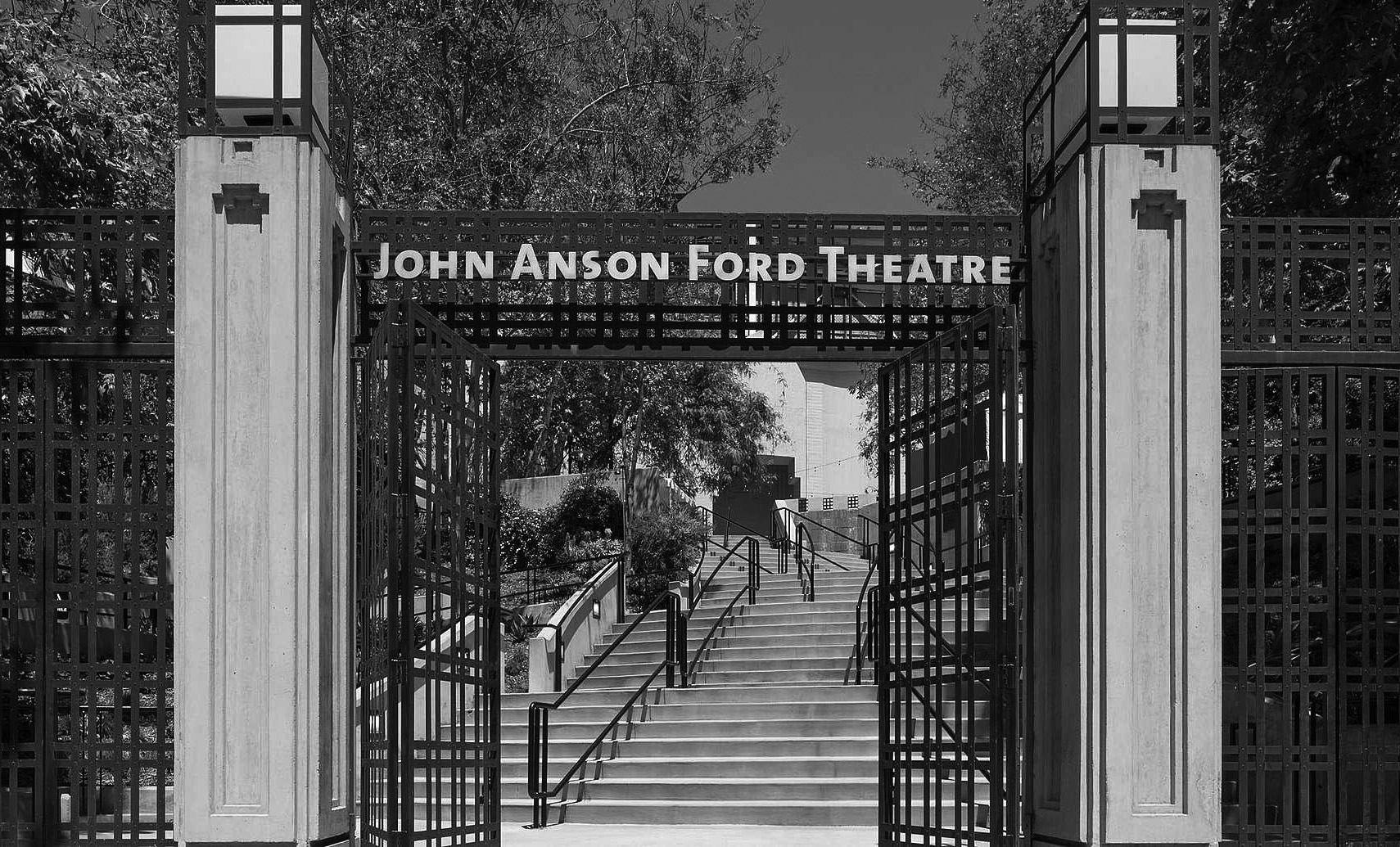 |
|
| (n.d.)^^- Entrance gate to the John Anson Ford Theatre. Photo courtesy of the National Trust for Historic Preservation |
Historical Notes In 1976, the Pilgrimage Theatre was renamed the John Anson Ford Theatre in honor of the late L.A. County Supervisor and his important contributions to the arts in Los Angeles. Among his many achievements, John Anson Ford helped found the L.A. County Arts Commission, encouraged the Board of Supervisors to support the building of The Music Center, and led L.A. County's acquisition of Descanso Gardens. |
* * * * * |
|
Other Sections of Interest |
|
Water and Power in Early LA |
|
Newest Additions |
New Search Index |

A new SEARCH INDEX has been added to help navigate through the thousands of topics and images found in our collection. Try it out for a test run.
Click HERE for Search Index |
* * * * * |
< Back
Menu
- Home
- Mission
- Museum
- Major Efforts
- Recent Newsletters
- Historical Op Ed Pieces
- Board Officers and Directors
- Mulholland/McCarthy Service Awards
- Positions on Owens Valley and the City of Los Angeles Issues
- Legislative Positions on
Water Issues
- Legislative Positions on
Energy Issues
- Membership
- Contact Us
- Search Index
© Copyright Water and Power Associates
Layout by Rocket Website Templates